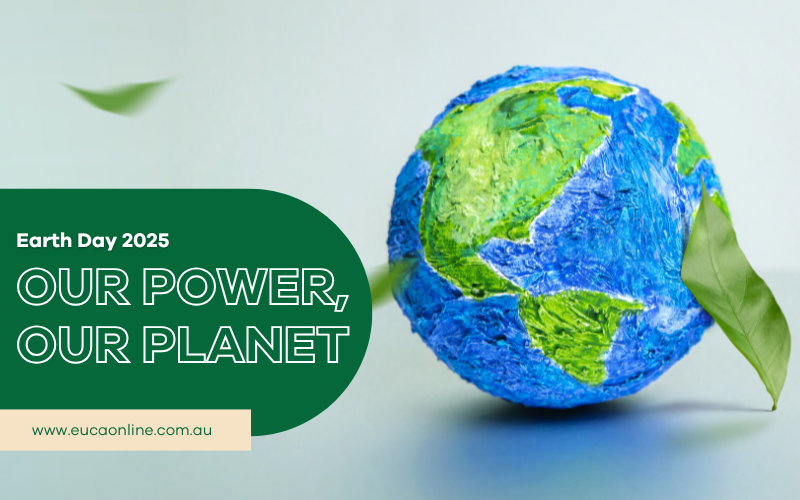0 comments
Are you being eco-friendly? In Australia, transportation is the nation’s second-largest source of greenhouse pollution after electricity.
Are you being eco-friendly? In Australia, transportation is the nation’s second-largest source of greenhouse pollution after electricity. Transportation is responsible for 18% of greenhouse gas emissions. That includes cars and other transportation methods such as buses, trains and planes. Cars are the main form of transportation that the average Australian commuter uses to travel. Almost 87% of the population use cars to go to school or work. The average passenger vehicle emits 404 grams of CO2 per mile. Driving less is a way to reduce your transportation emissions especially if you are using a gas-powered vehicle. Some known alternatives to reducing greenhouse emissions are the following:
- Walking - the best and most energy-efficient way to go around. Walking to get to work can help you reach the recommended 10,000 steps a day.
- Bicycle riding - Bike riding, of course, makes a wonderful contribution to the nation's fitness and to the fluidity of our cities.
- Carpooling - Carpooling reduces the number of cars on the road so it’s more environmentally friendly than driving your own car – there are fewer vehicle emissions and it has a lesser effect on congestion.
- Using the public transit - Of all adult Australians in full-time work or study, more than seven in 10 (71%) primarily use a passenger vehicle to commute, and nearly nine in 10 adults (88%) use a car to get to places other than work.
- Micro-mobility vehicle options like bikes and electric scooters -
For a long time, hybrid and electric vehicles look for solutions toward reducing carbon emissions especially if the energy source is renewable and is clean energy. You can still contribute to reducing your greenhouse emissions even if your car has an internal combustion engine. There are baby steps that you can take to make sure you are being eco-friendly. Here are some steps that can help you to reduce your transportation carbon emissions – whether you are running errands, commuting to work or school or just taking a long road trip:
1. Driving at the speed limit or slightly under helps reduce carbon emissions.
Topping up the gas tank causes harmful vapours escape into the air. Going easy on hitting the pedal and brakes is typically the most effective way to reduce your vehicle’s greenhouse gas emissions as it takes less fuel consumption. You can also use a driver feedback device to help save fuel by about 10%. Safe practices while driving can help you and the environment.
2. Use your car’s cruise control (when appropriate).
Cruise control was originally only found on high-end luxury cars, but now even the smallest cars often have it fitted as standard. If you have never used cruise control before then the controls might look confusing but once mastered, it is a useful system that will allow you to relax when driving long distances. Your cruise control setting can help you maintain a steady speed that improves gas mileage on the road. Just make sure that the weather conditions are safe before enabling cruise control.
3. Maintain your tire’s pressure to be eco-friendly.
Maintaining correct inflation pressure in tyres helps to keep vehicle handling and braking at its best, as well as improving fuel efficiency and tyre life. In addition, it can prevent such events as tread separations and tyre blowouts that may cause a loss of control of the vehicle and severe crashes. Under-inflation of tyres affects many different types of crashes, often in subtle or indirect ways. Under-inflated tyres can potentially result in:
- increased fuel consumption
- reduced vehicle handling
- increased likelihood of blowouts
- increased braking distance
- increased tyre wear
In addition to road safety consequences, under-inflated tyres are associated with environmental costs such as increased greenhouse gases associated with lower kilometres per tyre and higher fuel consumption and disposal problems. Tips for your tires:
- Use nitrogen instead of ‘plain old air’ in your tires. Nitrogen will help your tires remain at the proper pressure longer. By reducing the percentage of oxygen, water vapour and other gases in your tires from 22% to 7% or lower, your tires will maintain proper pressure longer. If you use 95% nitrogen, your tires will retain optimal pressure four times longer.
- The proper PSI is displayed on a sticker in the driver's side door jamb or the glove box and in your owner's manual.
- Check tires when they are cool for an accurate reading.
- Don’t forget the valve cap!
- Always check your tires before a long road trip.
4. Remove extra weight.
The lesser your car weights, the more efficiently it will run. An additional 100 pounds in your car can reduce gas mileage by up to 2%. The reduction is relative to the vehicle's weight: Smaller vehicles are more affected by increased weight than larger ones. For every 100 pounds in extra weight, plan on spending up to 6 cents more per gallon. Reducing your car weight by 20% provides an 8% mileage boost. Clear out your trunk for unnecessary items and consider only filling your tank halfway.
5. Fill up safely.
Filling your car full causes harmful vapours to escape into the air and forces liquid fuel into the canister. Overfilling your gas tank can cause damage to your car and it can cause the check engine light to come on. This can damage the system, requiring parts replacements. Also, make sure your fuel cap is screwed back on tight.
6. Avoid unnecessary miles
Your car’s engine becomes more fuel enhanced as it warms up, so one longer trip is better than multiple short trips. Do your errands in a long trip rather than with multiple stops.
7. Limit your AC
Turn off your car’s AC to save more energy. You can open your car’s window to let the wind in. Purchasing window tint will make the trip more bearable since it will reflect up to 78% of the sun’s heat. Park your car in a shade and drive during the cooler parts of the day.
8. Obey the speed limit
On average, every 5 mph you drive, over 50 mph is equivalent to an additional cost for gas. Maximize your fuel- efficiency by driving 5 mph below the speed limit.
9. Get regular maintenance
- Regular tune-ups can boost your gas mileage by 4% and repairing serious problems can improve fuel efficiency by 40%. Find a mechanic you trust and take your car to get checked at least once a year.
10. Use 100% eco-friendly products to clean your car
Many people are unaware of the possible adverse environmental impact of washing their cars. The use of environmentally friendly products reduces health issues. Skin burns, eye-related issues and respiratory issues are sometimes caused by harmful ingredients in chemical-based cleaning products. Using safer more environmentally friendly product equivalents can reduce exposure and greenhouse gas pollution. Safer, eco-friendlier car cleaning products like Euca Show Time all-purpose wash is a great alternative. A genuinely new all-purpose cleaning product that has real advances and improvements to change the way you think about washing your car, truck, bike or boat. Euca eco-friendly cleaning products are tried and tested independently by Lanfax Laboratories so we can assure you that Euca has amongst the lowest in all trace elements associated with environmental degradation. You can visit euca.com.au for more details. We hope that these steps helped you to reduce your transportation carbon emissions.



































Write a comment